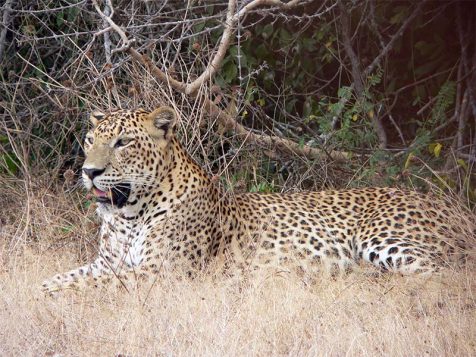Located in the northwest of the country, Wilpattu National Park is Sri Lanka’s oldest and largest national park. Wilpattu literally means Land of Lakes, and it gets this name from the numerous water bodies called villus, numbering over fifty, which lie scattered among the forested areas of the park. The villus is shallow depressions in the ground that hold rainwater from the wet season and are a distinguishing feature of the park. The vastness of Wilpattu National Park makes it very different from other parks in the country as even during peak season very few visitors are encountered, making it an isolated one with a nature experience.
Wilpattu National Park harbors a large population of leopards, but its large size means they are spread thinly. Experienced game trackers who accompany every vehicle entering the park, have intimate knowledge of the feline’s movements, which makes sightings easier. Most often, leopards are seen around the scrub jungle of the villus from where they lie in wait for their prey. The sloth bear is generally shy and tends to keep to the dense woodlands and sightings are rare. Most elephants in the park also stick to the wooded areas and mainly venture out into the open areas to water at villus. Spotted deer abound and the larger sambhur is very common. Other animals that can be seen at Wilpattu National Park include wild buffalo, wild boar, barking deer, grey langurs, mongoose, and jackal.
The villus are a haven for birdlife and painted stork, white ibis, and purple and grey herons include their permanent residents. Waterfowl such as whistling teal, cormorant, garganey, and pintail also frequent their food-rich waters. Mugger crocodiles make the villus their home, stealthily lying in the waters to grab unsuspecting prey.
Written by Jonathan Roelofsz for Travel Lanka Compass



0 Comment